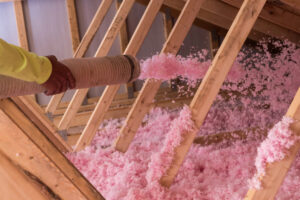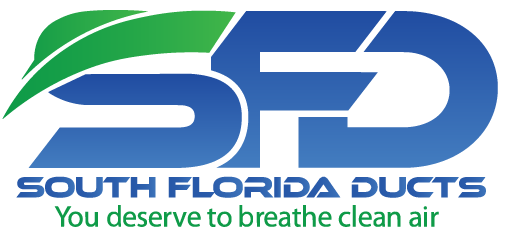 As the mercury rises and the sun beats down relentlessly, homeowners find themselves in a constant battle to keep their homes cool and comfortable. The attic, often an overlooked and forgotten space, can play a pivotal role in this ongoing struggle. Unbeknownst to many, the insulation, or lack thereof, in this uppermost region of the house can have a profound impact on the efficiency and performance of the air conditioning system. In this comprehensive guide, we will delve into the intricate relationship between attic insulation and cooling efficiency, uncovering the hidden ways in which this often-neglected aspect of home maintenance can revolutionize your summer comfort and energy savings. From understanding the science behind heat transfer to exploring the various insulation options, we’ll equip you with the knowledge to make informed decisions and transform your home into a bastion of cool, energy-efficient bliss.
As the mercury rises and the sun beats down relentlessly, homeowners find themselves in a constant battle to keep their homes cool and comfortable. The attic, often an overlooked and forgotten space, can play a pivotal role in this ongoing struggle. Unbeknownst to many, the insulation, or lack thereof, in this uppermost region of the house can have a profound impact on the efficiency and performance of the air conditioning system. In this comprehensive guide, we will delve into the intricate relationship between attic insulation and cooling efficiency, uncovering the hidden ways in which this often-neglected aspect of home maintenance can revolutionize your summer comfort and energy savings. From understanding the science behind heat transfer to exploring the various insulation options, we’ll equip you with the knowledge to make informed decisions and transform your home into a bastion of cool, energy-efficient bliss.
The Attic’s Pivotal Role in Cooling Efficiency
The attic, often referred to as the “forgotten space” in a home, plays a crucial role in the overall cooling efficiency of the entire structure. This seemingly innocuous area, perched high above the living spaces, is where the battle for temperature control is often won or lost.
The Attic’s Battle Against Heat Infiltration
During the scorching summer months, the sun’s relentless rays beat down on the roof, causing the attic to become a veritable furnace. Without proper insulation, this heat can easily seep through the ceiling, infiltrating the living spaces below and forcing the air conditioning system to work overtime to maintain a comfortable temperature.
The Importance of Insulation Levels
The key to combating this heat transfer lies in the quality and depth of the attic insulation. Inadequate or worn-out insulation allows the hot air to penetrate the living areas, leading to a constant struggle to keep the home cool. Conversely, a well-insulated attic acts as a barrier, trapping the heat in the uppermost region and preventing it from reaching the lower floors.
The Ripple Effect on Energy Costs
The consequences of an improperly insulated attic extend far beyond mere comfort. As the air conditioning system labors to counteract the influx of hot air, energy consumption skyrockets, resulting in higher utility bills and a significant strain on the household budget. Investing in proper attic insulation can be a game-changer, delivering tangible savings on cooling costs while enhancing the overall energy efficiency of the home.
Understanding the Science of Heat Transfer
To fully appreciate the importance of attic insulation, it’s essential to understand the underlying principles of heat transfer and how they apply to the cooling of a home.
The Three Modes of Heat Transfer
Heat can be transferred in three primary modes: conduction, convection, and radiation. In the context of attic insulation, each of these modes plays a crucial role in the battle against unwanted heat infiltration.
Conduction
Conduction is the direct transfer of heat through solid materials, such as the wooden beams and sheathing that make up the attic’s structure. Uninsulated, these materials can act as conduits, allowing heat to seep through and into the living spaces below.
Convection
Convection, the movement of heat through the air, is another avenue through which heat can enter the home. Warm air rising from the lower levels can accumulate in the attic, creating a heat trap that must be addressed.
Radiation
Radiant heat, emitted by the sun’s rays, can also contribute to the heating of the attic space. This direct transfer of energy from the sun to the roof and attic materials can further exacerbate the temperature imbalance.
The Importance of R-Value
To combat these modes of heat transfer, insulation materials are rated based on their thermal resistance, or R-value. The higher the R-value, the more effective the insulation is at slowing down the movement of heat. Ensuring that the attic insulation meets or exceeds the recommended R-value for your climate is crucial for maintaining cooling efficiency.
The Impact of Attic Ventilation
While insulation is a critical component in maintaining cooling efficiency, attic ventilation also plays a vital role in the overall temperature regulation of a home. Proper ventilation can work in tandem with insulation to create a well-balanced and energy-efficient cooling system.
The Importance of Airflow
Adequate ventilation allows hot air to escape the attic, preventing it from seeping into the living spaces below. This airflow helps to regulate the temperature in the attic, reducing the strain on the air conditioning system.
Types of Attic Ventilation
There are several common methods of attic ventilation, each with its own advantages:
Passive Ventilation
Passive ventilation systems, such as ridge vents, soffit vents, and gable vents, rely on natural air currents to facilitate the exchange of hot and cool air.
Mechanical Ventilation
Mechanical ventilation, including powered attic fans and whole-house ventilation systems, actively circulate air, providing a more controlled and efficient approach to temperature regulation.
Hybrid Systems
Combining passive and mechanical ventilation can create a comprehensive solution, leveraging the strengths of both methods to optimize airflow and cooling efficiency.
The Synergy of Insulation and Ventilation
When insulation and ventilation work in harmony, the results can be truly transformative. The insulation acts as a barrier to heat transfer, while the ventilation system removes the hot air that inevitably accumulates in the attic. This synergistic approach ensures that the air conditioning system operates at peak efficiency, delivering optimal cooling performance and energy savings.
Addressing Common Attic Insulation Challenges
While the benefits of attic insulation are well-documented, homeowners may face certain challenges that require specialized attention. Understanding these obstacles and how to overcome them is crucial for ensuring the long-term effectiveness of your cooling system.
Irregular Attic Spaces
Many older homes feature attics with complex shapes and hard-to-reach areas. Ensuring complete and consistent insulation coverage in these spaces can be a daunting task, requiring creative solutions and the expertise of professional installers.
Existing Insulation Concerns
In some cases, homeowners may discover that their attic already contains insulation, but it may be outdated, damaged, or insufficient. Properly assessing the condition and effectiveness of the existing insulation is crucial before undertaking any new installation.
Attic Ventilation Imbalances
As mentioned earlier, the interplay between insulation and ventilation is essential for optimal cooling efficiency. Addressing any imbalances or deficiencies in the attic’s ventilation system is a critical step in maximizing the benefits of your insulation investment.
Addressing Air Leaks
Even the most well-insulated attic can fall victim to air leaks, which allow hot air to infiltrate the living spaces. Identifying and sealing these gaps and cracks, often around ductwork, wiring, and other penetrations, is a crucial step in enhancing the overall performance of the cooling system.
By proactively addressing these challenges, homeowners can ensure that their attic insulation remains effective, delivering long-lasting benefits in terms of energy savings, comfort, and the overall efficiency of their air conditioning system.
Calculating the Return on Investment
Investing in attic insulation is not merely a matter of improving comfort and reducing energy bills; it can also be a savvy financial decision with tangible returns. Understanding the potential return on investment (ROI) can help homeowners make an informed decision and justify the upfront costs.
Estimating Energy Savings
One of the primary benefits of attic insulation is the reduction in energy consumption required to cool the home. By preventing heat transfer, the air conditioning system doesn’t have to work as hard, leading to lower utility bills. Calculating the potential energy savings can provide a clear picture of the long-term financial benefits.
Factoring in Rebates and Incentives
Many utility companies and government programs offer rebates and incentives for homeowners who invest in energy-efficient home improvements, including attic insulation. Exploring these options can help offset the initial costs and further enhance the ROI.
Considering Increased Home Value
Upgrading the attic insulation can also have a positive impact on the overall value of the home. Potential buyers often view a well-insulated home as a desirable and energy-efficient investment, which can translate to a higher selling price when the time comes to list the property.
Long-Term Cost Savings
Beyond the immediate energy savings, attic insulation can also contribute to long-term cost savings by extending the lifespan of the air conditioning system. By reducing the strain and wear and tear on the equipment, homeowners can potentially delay costly repairs or replacements, further enhancing the financial benefits of this investment.
By carefully analyzing the potential energy savings, available incentives, and the impact on home value, homeowners can make a compelling case for investing in high-quality attic insulation, transforming their homes into energy-efficient oases of comfort and financial stability.
The Importance of Professional Installation
While DIY home improvement projects can be tempting, when it comes to attic insulation, the expertise and experience of a professional installer can make all the difference in maximizing the benefits and ensuring long-term performance.
Ensuring Proper R-Value and Coverage
Experienced insulation contractors understand the nuances of calculating the appropriate R-value for your climate and home, as well as the importance of comprehensive coverage throughout the attic space. This attention to detail can make the difference between an effective insulation system and one that falls short of its potential.
Addressing Unique Attic Challenges
As mentioned earlier, attics can present unique challenges, such as irregular shapes, hard-to-reach areas, and existing insulation concerns. Professional installers have the knowledge and tools to tackle these obstacles, ensuring that the insulation is installed correctly and without compromising its effectiveness.
Maintaining Safety and Compliance
Proper attic insulation installation requires adherence to safety protocols and local building codes. Trained professionals are well-versed in these requirements, safeguarding both the homeowner and the integrity of the project.
Offering Comprehensive Warranties
Many reputable insulation companies provide robust warranties on their workmanship and materials, giving homeowners the peace of mind that their investment is protected for the long term.
By entrusting the installation of your attic insulation to a qualified professional, you can rest assured that the job will be done right, maximizing the benefits of improved cooling efficiency, energy savings, and long-term home value.
The Ripple Effect of Attic Insulation
Upgrading the insulation in your attic is not just about keeping your home cool and comfortable during the summer months; it’s a strategic investment that can have far-reaching positive impacts on your household and the environment.
Enhanced Energy Efficiency
As we’ve explored, properly insulated attics significantly reduce the workload on air conditioning systems, leading to substantial energy savings. This not only benefits your monthly utility bills but also contributes to a more sustainable energy landscape by reducing the demand for fossil fuels and greenhouse gas emissions.
Improved Indoor Air Quality
By sealing air leaks and creating a more airtight barrier in the attic, attic insulation can also help to improve indoor air quality. This can be especially beneficial for households with individuals who suffer from allergies or respiratory conditions, as it helps to prevent the infiltration of outdoor pollutants and allergens.
Enhanced Home Comfort and Value
A well-insulated attic not only enhances the cooling efficiency of your home but also contributes to a more comfortable living environment year-round. This, in turn, can have a positive impact on the overall value of your property, making it a desirable investment for both current and future homeowners.
Environmental Stewardship
By reducing energy consumption and the associated carbon footprint, investments in attic insulation align with the growing demand for more sustainable and eco-friendly home improvements. This contribution to environmental stewardship can have a lasting impact on the planet, benefiting both present and future generations.
We Provide Attic Insulation Services
Homeowners everywhere in South Florida are losing money, and dealing with uncomfortable temperatures in their houses if they don’t have the proper attic insulation.
> Learn More
In the relentless pursuit of summer comfort and energy efficiency, the humble attic holds the key to unlocking a new level of cooling performance and cost savings. By understanding the science of heat transfer, exploring the diverse insulation options, and embracing the synergetic power of ventilation, homeowners can transform their attics into impenetrable fortresses against the scorching summer heat.
Contact Us (954-909-4281) For a Free Estimate
Book an Appointment
—
 About South Florida Ducts
About South Florida Ducts
Air Duct Cleaning
We remove the maximum amount of the dirt and dust possible.
> Learn More
Air Duct Restoration
Hospital grade duct restoration when ducts need more than a vacuuming.
> Learn More
Air Duct Installation
New air ducts vastly improve your AC’s efficiency and overall air quality.
> Learn More
A/C Services
From routine maintenance visits to custom installations, SFD does it all and does it well.
> Learn More

 About South Florida Ducts
About South Florida Ducts